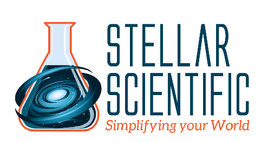Pushing PCR to More Places - More products for the polymerase chain reaction make it ever easier to apply this technology
Posted by Stellar Staff on 7th Jan 2019
When Cary Mullis came up with the polymerase chain reaction (PCR) in 1983, it might have been hard to imagine how ubiquitous this technique would become in research and clinical labs.
PCR is “a common laboratory technique used to make many copies (millions or billions!) of a particular region of DNA,” according to an article on the Khan Academy website. “For instance, DNA amplified by PCR may be sent for sequencing, visualized by gel electrophoresis, or cloned into a plasmid for further experiments.”
Scientists apply that tool in clinical tests, ecology, forensics, medical research, molecular biology and much more.
It only takes a couple of examples to get a feel for the breadth of PCR’s potential. For instance, Marre van den Brand of the VU University Medical Center (Amsterdam, The Netherlands) and her colleagues used real-time PCR to analyze bacterial DNA in neonates suspected of having sepsis.
“Rapid and accurate diagnosis of neonatal sepsis is highly warranted because of high associated morbidity and mortality,” van den Brand and her colleagues reported. Using PCR, these scientists measured the bacterial DNA load (BDL) in the blood. The team concluded: “BDL measurement may be a useful indicator of severity of infection.”
A team of scientists from Finland and Switzerland used PCR to analyze deer and moose meat for microbial contamination.
They noted: “Poor hunting hygiene can spread bacteria onto the carcasses, and inadequate chilling of the carcasses may increase the bacterial load on the carcass surface.”
From PCR-based results, these scientists found: “The bacterial counts on the moose and deer carcasses varied highly, and more attention should be paid to hunting hygiene and training of hunters. Game meat may be a source of meat-borne pathogens, and close attention should therefore be paid when handling and preparing game.”
These examples reveal how broadly PCR can be applied, as long as scientists can obtain the right tools.
Perusing our products
We carry a range of PCR supplies, including PCR tubes, strip tubes, PCR plates and PCR seals. In PCR plate seals, for instance, we stock various kinds, such as the UltraFlux RT (Real-Time) Pressure Released Film, which is very clear, making it a great choice for optical analysis during real-time PCR.
Plus, we offer a collection of PCR enzymes and kits. These include options for end-point and real-time PCR. The Radiant Green Lo-ROX qPCR Kit, for example, is optimized for real-time PCR on quantitative PCR platforms, such as the Applied Biosystems 7500 FAST and 7500 Real-Time PCR systems.
To compare these products to others, ask for documentation that shows how they perform. If you want to test out an enzyme, contact us to see if you qualify for a free sample.
At 36 years old, PCR is not even middle-aged—and by the standards of science, it might be a teenager at best. So, more maturing lies ahead for PCR, and that will surely make it even easier to use and open new applications.

